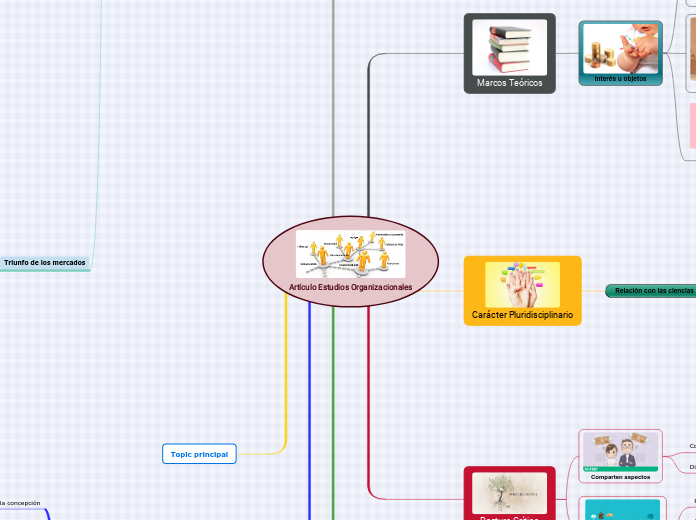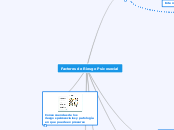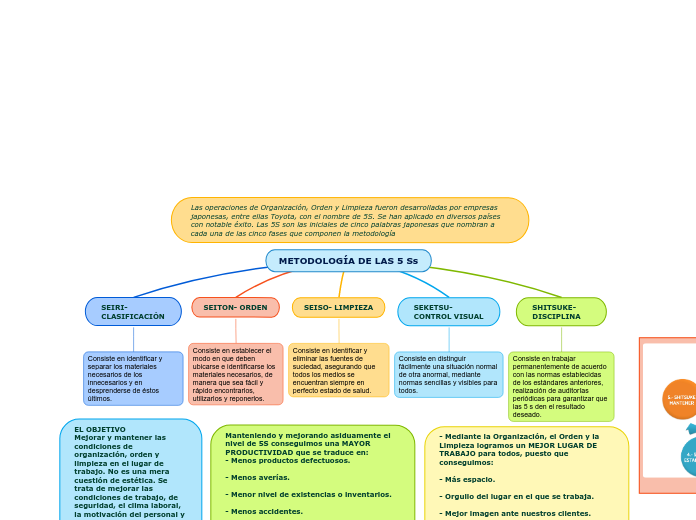Nombre: Evelyn Castellano
Referencia:
Gonzales, D. (Octubre-Diciembre de 2014). Los Estudios Organizacionales. Un campo de conocimiento comprensivo para el estudio de las organizaciones. Innovar, 24(54), 43-58. Recuperado el 16 de Diciembre de 2020, de https://www.redalyc.org/pdf/818/81832222004.pdf
Artículo Estudios Organizacionales
The Solar System is the gravitationally bound system of the Sun and the objects that orbit it, either directly or indirectly. Of the objects that orbit the Sun directly, the largest are the eight planets, with the remainder being smaller objects, the dwarf planets, and small Solar System bodies.
Objeto de estudio
Saturn is known most for its rings.
Galileo Galilei first thought it was an object with three parts: a planet and two large moons on either side.
Not knowing he was seeing a planet with rings, the stumped astronomer entered a small drawing — a symbol with one large circle and two smaller ones — in his notebook.
The rings are made of ice and rock and scientists are not yet sure how they formed. The gaseous planet is mostly hydrogen and helium.
La organización
A planet's day is the time it takes the planet to rotate or spin once on its axis.
Write down Saturn's day measured in Earth days.
Hábitos
No tiene realidad extralingüística
Constante construcción
Proceso social
Objetos reales
Subtopic
Movimiento de Contingencia
Fronteras
Relación interna-externa
Aspectos fuera de la organización
Organización en sí misma
Dimensiones
Neptune is about the size of Uranus and is known for supersonic strong winds.
Neptune is far out and cold.
The planet is more than 30 times as far from the sun as Earth.
Neptune was the first planet predicted to exist by using math, before it was visually detected. Neptune is about 17 times as massive as Earth and has a rocky core.
Acercamiento a una definición
Neptune has thirteen moons that we know of and one more waiting for confirmation.
The largest moon is slightly smaller than Earth's Moon and has active volcanoes which erupt like geysers and eject nitrogen frost over the surface.
Name this moon and at least 4 others.
EO como disciplina
Búsqueda de contribuciones económicas
Sociedad actual frente a crisis moral
Realidades organizacionales
Epistemología positivista
Metodológico
How long does it take for Neptune to go around the sun?
Utilización del lenguaje conceptual
y metafórico
EO buscan captación y reconstrucción
de significados
Múltiples formas de hacer las cosas
Reconocer la participación del investigador
Los hechos científicos No
existen por si mismos
Epistemológico
A planet's day is the time it takes the planet to rotate or spin once on its axis.
Write down Neptune's day measured in Earth days.
Constructivismo
Devela aspectos sociales olvidados
No existe entidad supraindividual
Las personas crean la sociedad
Ontológico
Compromiso
Transformación de la simetría conceptual
Presencia y ausencia
Visible e invisible
Consciente e Inconsciente
Lenguaje. Actividades de
denominación Y representación
Estructuración sistemática del mundo
Ordenación
Énfasis modernista
Regularidad
Orden
Estabilidad
Aproximaciones
Múltiples perspectivas
Postmodernas
Subjetivista
Realismo independiente
Organizaciones reales
Gira entorno a la concepción
Topic principal
Contextualización histórica
It was once considered a planet but in August 2006 the International Astronomical Union (IAU) downgraded the status of Pluto to that of “dwarf planet.”
Pluto is unlike other planets in many respects. It is smaller than Earth's moon; its orbit is highly elliptical.
It's a cold, rocky world with a tenuous atmosphere. Pluto is a very active ice world that's covered in glaciers, mountains of ice water, icy dunes, and possibly even cryovolcanoes that erupt icy lava made of water, methane or ammonia.
Triunfo de los mercados
Consecuencias
EO menos vulnerables
Nuevos radicales
Liberalismo
Nuevos usos
Nueva forma de organización
Efectos Académicos
Búsqueda de la verdad no podría ser
parte del espíritu de investigación
Caída del imperio soviético
1991
Triunfo del capitalismo
Protestas años 1960-1970
The dwarf planet Pluto has five moons.
Name these moons.
Efectos de la Postguerra
Investigaciones Cualitativas
Estudio del poder
Construcción social
Sentido de las decisiones
Estudio de género
Cultura
Métodos Cuantitativos
Estudio de redes
Procesamiento de información
Toma de decisiones
Organización demográfica
Ambiente intelectual propio
Entusiasmo romántico
Crítica radical
Apoyo a la sensibilidad feminista
Oposición a la intervención norteamericana
Segunda Guerra Mundial
(1939-1945)
How long does it take for Pluto to go around the sun?
Estados Unidos
Desarrollo histórico del EO
Década 1970
EO lograron destacar
Devastación económica e
intelectual
Postura Crítica
Mars is a cold, desert-like place covered in dust. This dust is made of iron oxides, giving the planet its iconic red hue.
Mars shares similarities with Earth: It is rocky, has mountains, valleys and canyons, and storm systems ranging from localized tornado-like dust devils to planet-engulfing dust storms.
Resolución de problemas
A planet's day is the time it takes the planet to rotate or spin once on its axis.
Write down Mars's day measured in Earth days.
Gestión eficiente
Sustento comprensivo
Actitud crítica frente a la realidad
Rentabilidad de recursos invertidos
Comparten aspectos
Divergentes
Convergentes
Carácter Pluridisciplinario
Venus is Earth's twin in size and has no moons.
Its surface has various mountains and volcanoes. Because of its thick, toxic atmosphere that's made of sulfuric acid clouds, Venus is an extreme example of the greenhouse effect. The average temperature on Venus' surface is 900 F (465 C).
Venus spins slowly from east to west, the opposite direction to most of the other planets.
The Greeks believed Venus was two different objects — one in the morning sky and another in the evening. Because it is often brighter than any other object in the sky, Venus has generated many UFO reports.
Relación con las ciencias sociales
Diversas disciplinas
Trabajo independiente
Mismos objetivos
Integración teórica y práctica
Marcos Teóricos
Mercury is the smallest, only a little bit larger than Earth's moon. Mercury has no moon.
It experiences dramatic changes in its day and night temperatures: Day temperatures can reach a scorching 840 F (450 C), which is hot enough to melt lead. Meanwhile, on the night side, temperatures drop to minus 290 F (minus 180 C).
It also has a very thin atmosphere of oxygen, sodium, hydrogen, helium, and potassium and can't break-up incoming meteors, so its surface is pockmarked with craters, just like the moon.
Interés u objetos
Our Solar System has eight “official” planets which orbit the Sun.
Each planet is at a different distance from the sun. Name its position.
Procesos sociales
Restablecimiento de relaciones afectivas
Discursos teóricos
Consenso
Objetos empíricos
Complicidad agente-estructura









